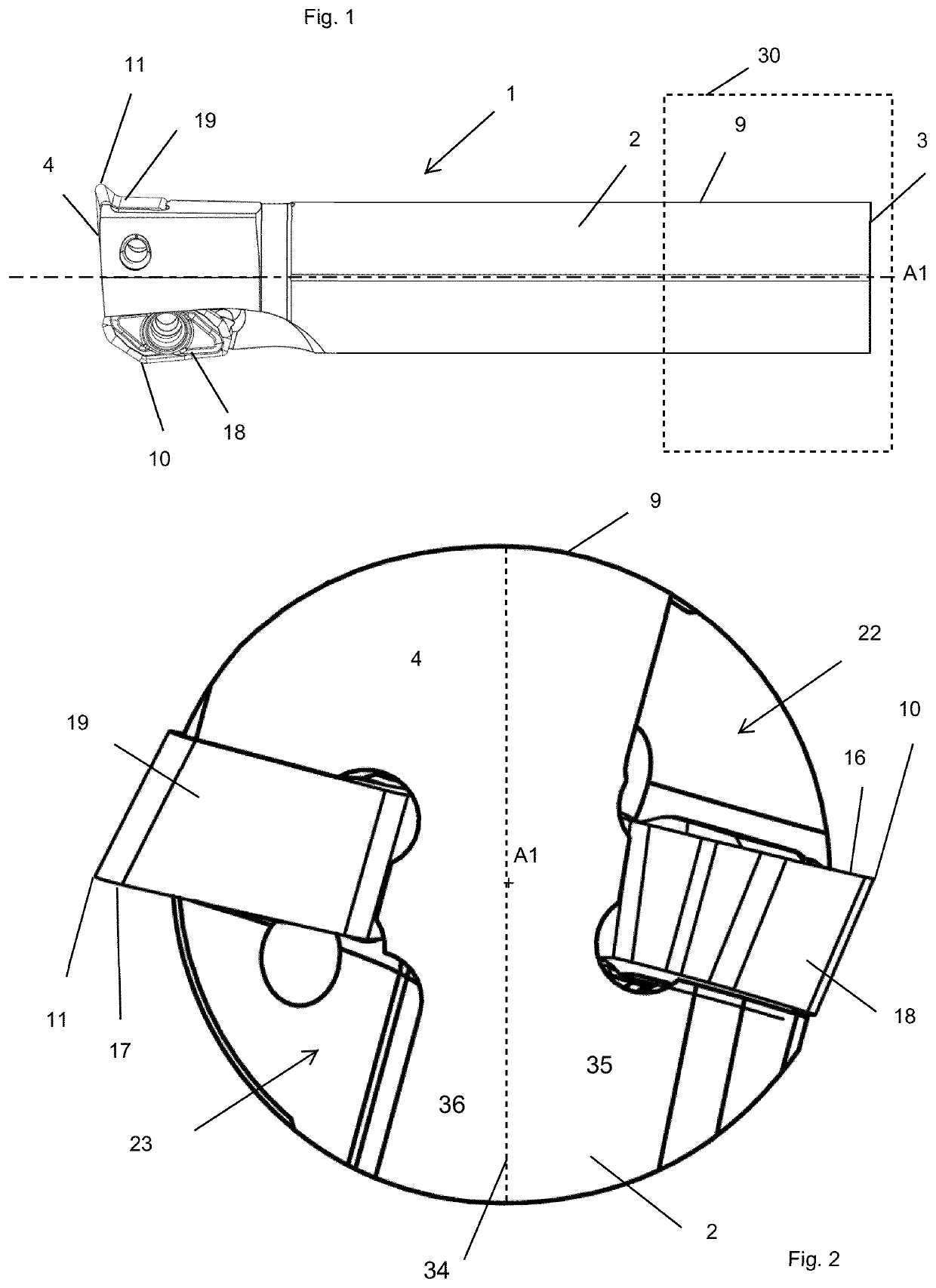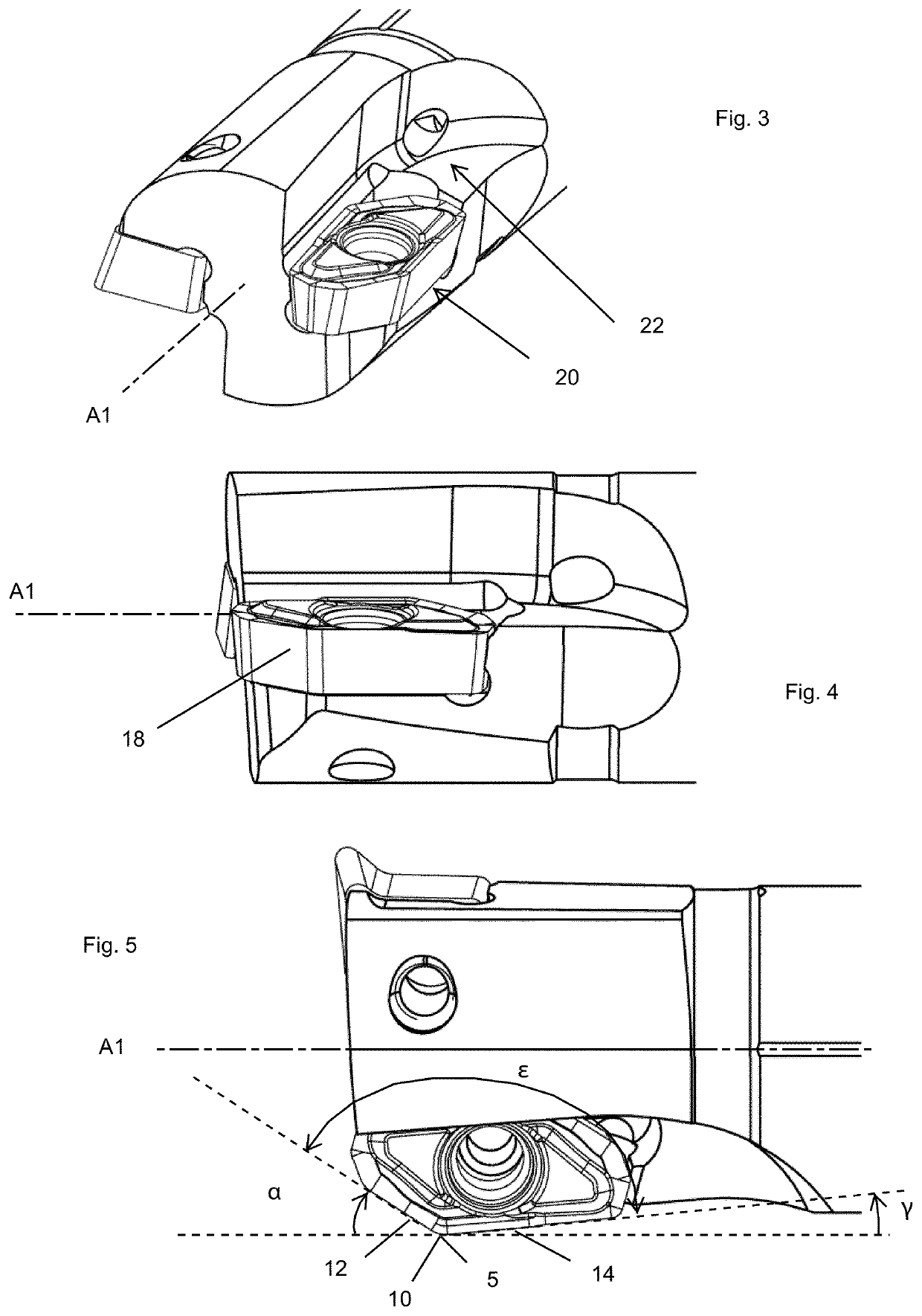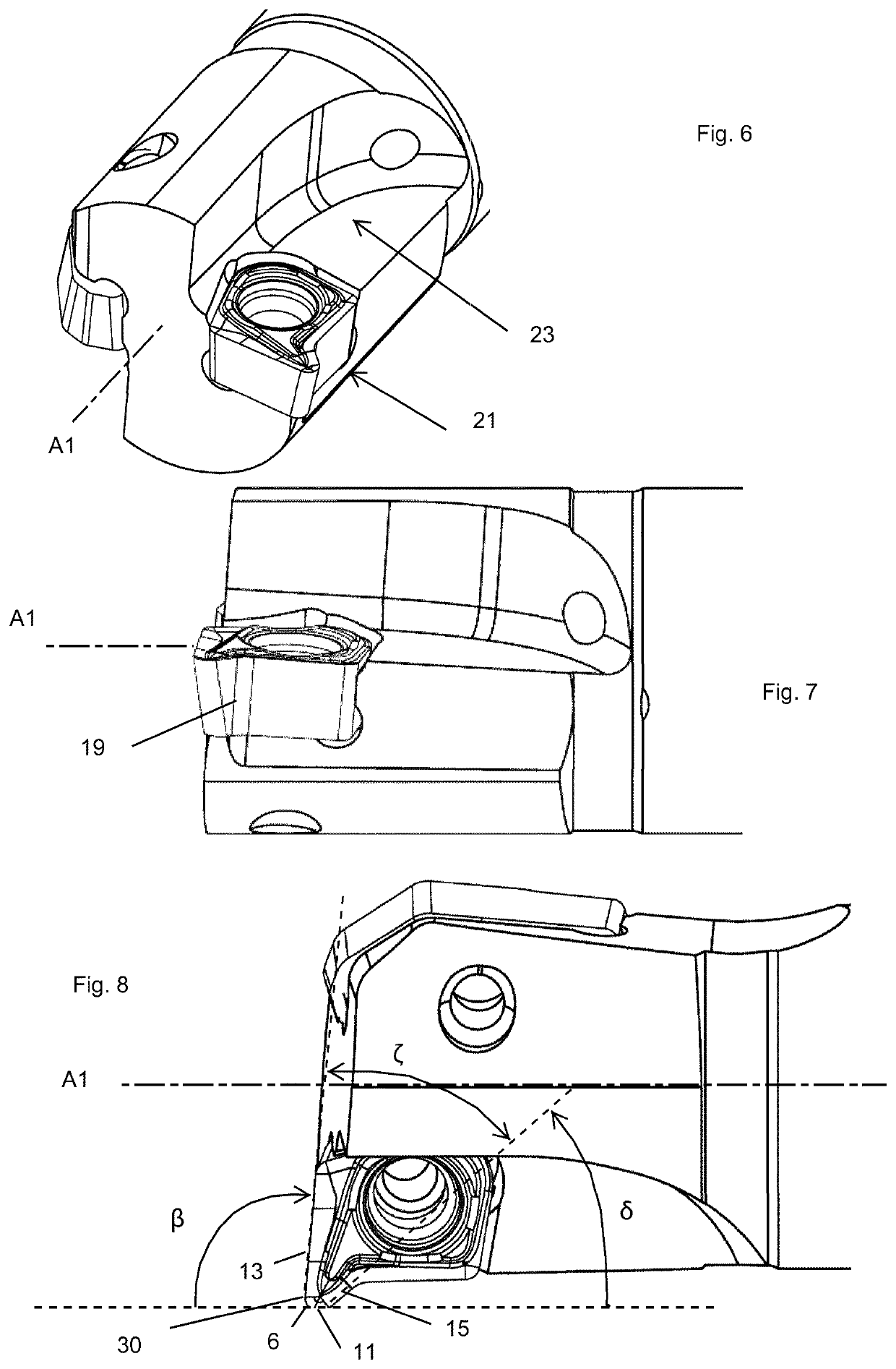Turning tool and method for metal cutting
a turning tool and metal cutting technology, applied in the field of metal cutting, can solve the problems of poor chip breaking, poor chip evacuation, and less cost-efficient use of two separate turning tools, and achieve the effects of less cost-effective and time-consuming
- Summary
- Abstract
- Description
- Claims
- Application Information
AI Technical Summary
Benefits of technology
Problems solved by technology
Method used
Image
Examples
first embodiment
[0178]Reference is made to FIGS. 1-8, which show a turning tool 1 according to a
[0179]The turning tool 1 comprises a rear end 3, an opposite forward end 4 and a longitudinal center axis A1 extending therebetween.
[0180]The rear end 3 is clamped to a machine interface 30 of a machine tool, such as a numerical control lathe (not shown). The turning tool 1 comprises a tool body 2, a first turning insert 18 and a second turning insert 19. The tool body 2 comprises an external peripheral surface 9 which comprises a portion which is circular or substantially circular in cross sections perpendicular to the longitudinal center axis A1. The tool body 2 comprises a first insert seat 20 and an opposite second insert seat 21, a first chip pocket 22, adjacent to the first insert seat 20, and an opposite second chip pocket 23, adjacent to the second insert seat 21,
[0181]The first and second insert seats 20, 21 are spaced apart. The first and second chip pockets 22, 23 are spaced apart. The first a...
second embodiment
[0183]All the above is valid also for the turning tool seen in FIGS. 20-23.
[0184]As seen in e.g. FIGS. 9-11, the first turning insert 18 which is part of the turning tool according to the first embodiment comprises a first top surface 26, comprising the first rake face 16, and an opposite first bottom surface 28, a first nose cutting edge 5, a first forward cutting edge 12 and a first rearward cutting edge 14.
[0185]The first nose cutting edge 5 comprising a first radially distal point 10, when the first turning insert 18 is mounted in the first insert seat 20. The first nose cutting edge 5 separates and connects the first forward cutting edge 12 and the first rearward cutting edge 14, where said edges 5, 12, 14 are formed at an intersection between the first top surface 26 and a first side surface, where said first side surface connects the top and bottom surfaces 26, 28.
[0186]As can be seen in FIG. 5, the first forward cutting edge 12 forms an acute first entering angle α in longi...
PUM
| Property | Measurement | Unit |
|---|---|---|
| entering angle | aaaaa | aaaaa |
| clearance angle | aaaaa | aaaaa |
| entering angle | aaaaa | aaaaa |
Abstract
Description
Claims
Application Information
 Login to View More
Login to View More - R&D
- Intellectual Property
- Life Sciences
- Materials
- Tech Scout
- Unparalleled Data Quality
- Higher Quality Content
- 60% Fewer Hallucinations
Browse by: Latest US Patents, China's latest patents, Technical Efficacy Thesaurus, Application Domain, Technology Topic, Popular Technical Reports.
© 2025 PatSnap. All rights reserved.Legal|Privacy policy|Modern Slavery Act Transparency Statement|Sitemap|About US| Contact US: help@patsnap.com



